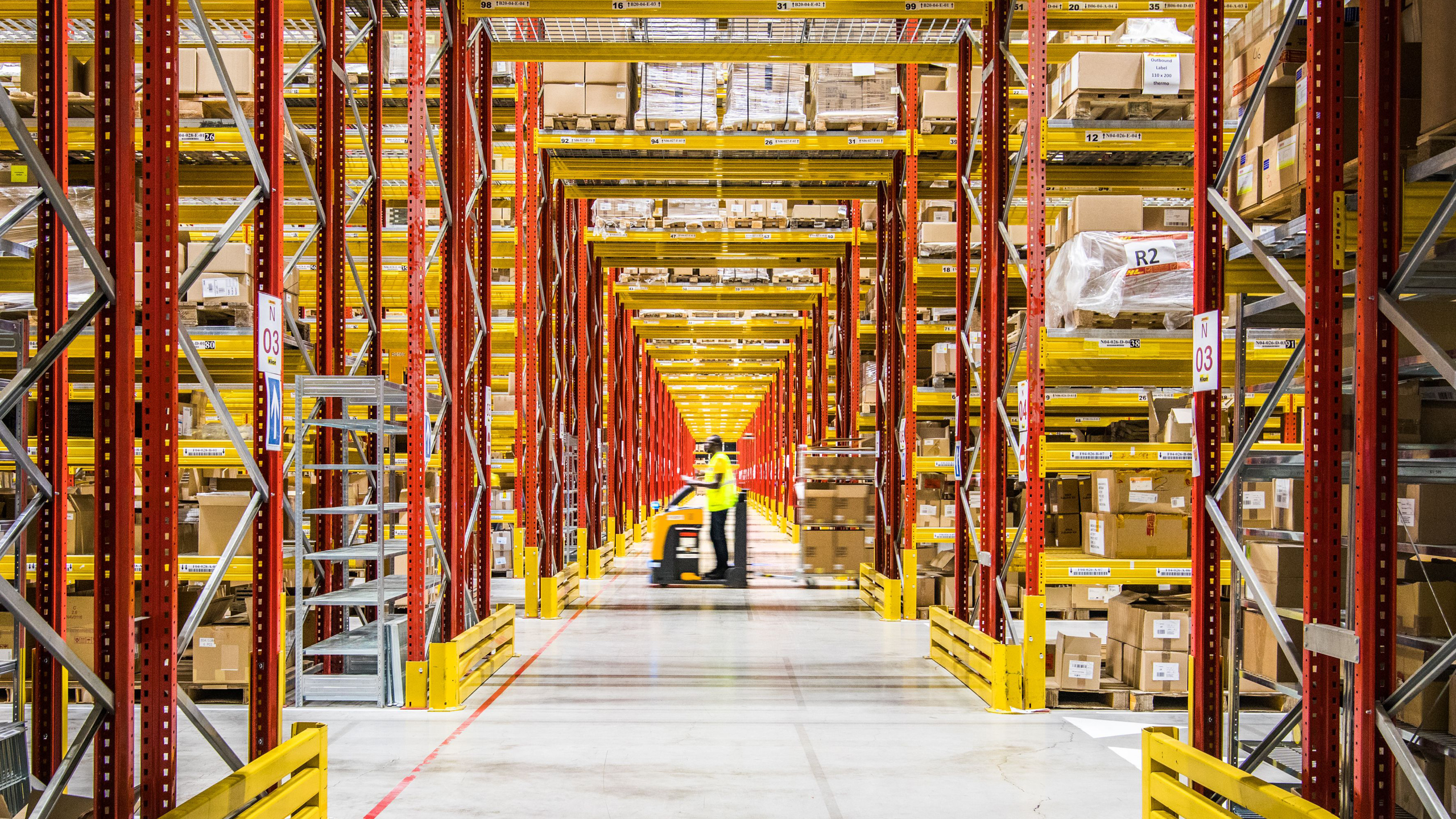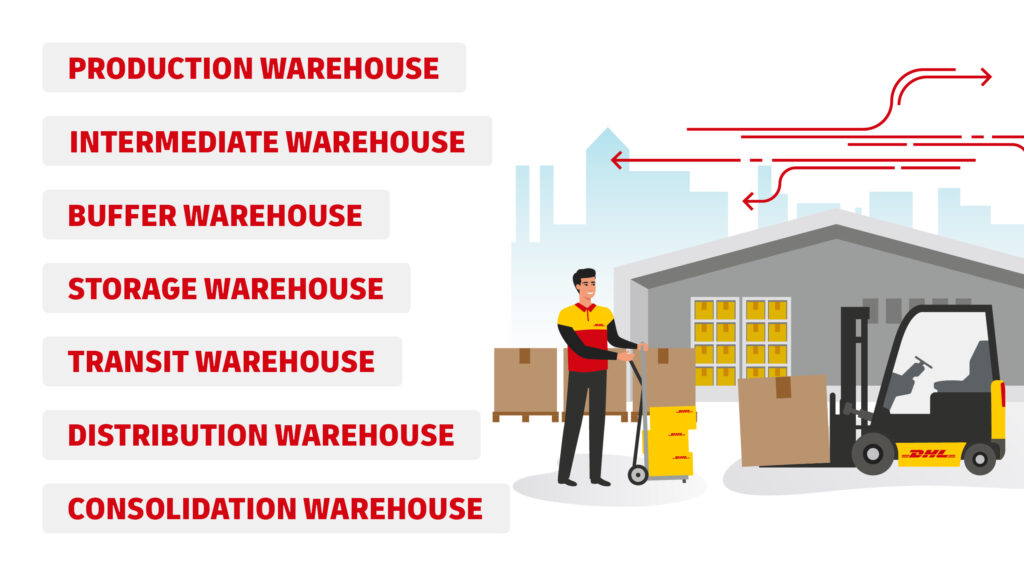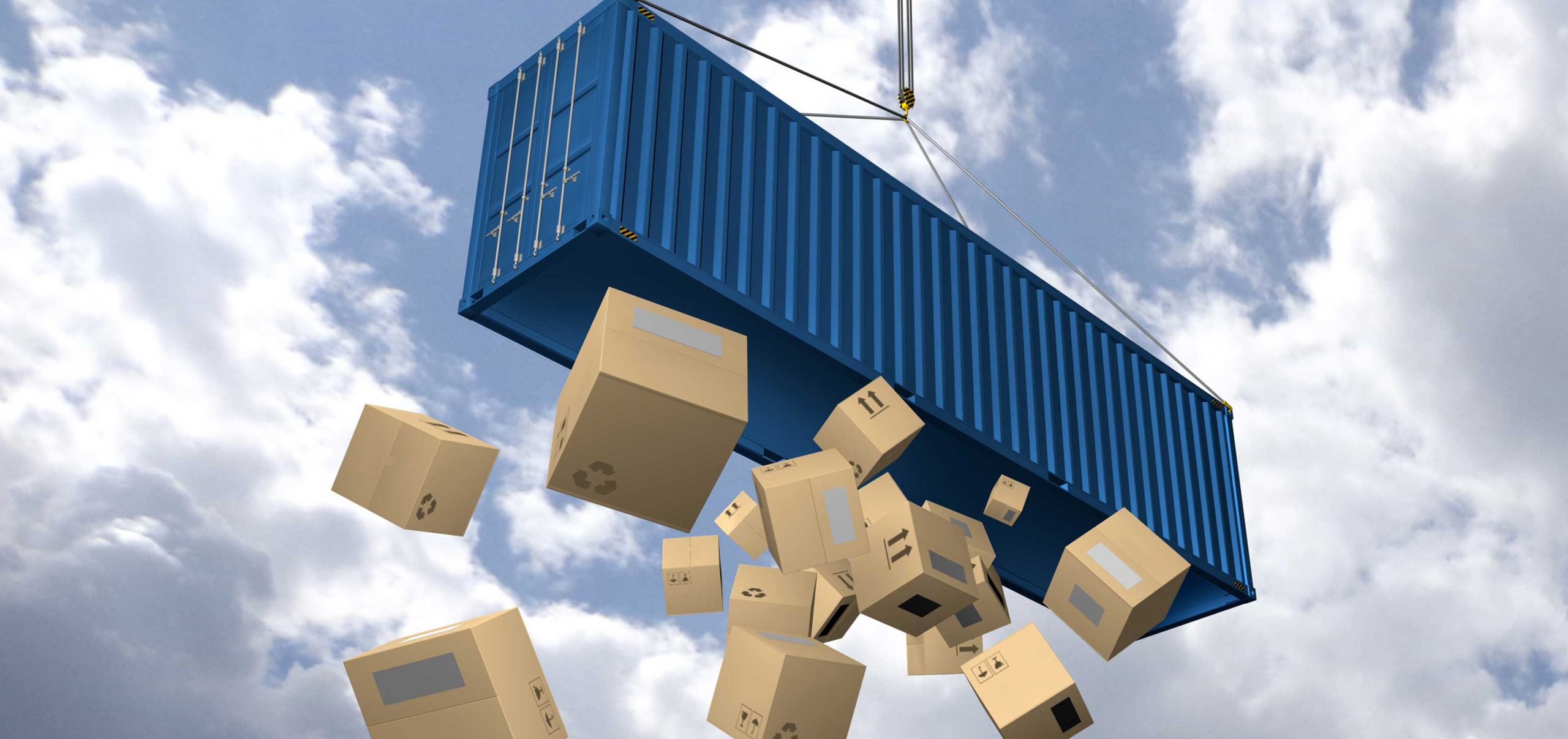
Getting goods to their destination as quickly and properly as possible is not just a matter of transport logistics – the supply chain can also be optimised by the right warehouse logistics. Companies and goods have specific warehouse requirements. That is why there are different types of warehouses in logistics to meet different needs. Here we introduce the most important warehouse types and explain for whom and for which stored goods they are best suited.
An Overview of Types of Warehouses
The most important category to distinguish between warehouse types is the respective function a warehouse fulfils: Does it hold precursors for further production? Are different goods stored and consolidated here to leave the warehouse collectively? Are goods to be stored for the long term to be accessible in case of bottlenecks? Are private end customers supplied directly from the warehouse?
In summary: The processes that take place in the warehouse and the purposes they serve determine the specific type of warehouse.
Other categories to distinguish warehouse types are:
- location (e.g., close to production or to customers)
- type of construction
- technology deployed in the warehouse
You cannot draw a sharp line between the individual categories: location or construction type naturally follow the function. A warehouse for production must be close to the manufacturing site or structurally suitable for the respective goods.
Furthermore, there are overlaps, i.e., certain warehouses may fulfil the same function but differ in terms of structural or technical criteria. Even within the categories, a clear demarcation is not always possible, for example, between transit and intermediate warehouses.

The Most Important Warehouse Types by Functionality
Production Warehouse
Goods that a company needs for its own production are stored in a production warehouse. It is therefore located upstream of production in the value chain. Its usual function is to keep precursors, semi-finished products, or raw materials required for the final products in stock.
This means that a production warehouse must provide sufficient space, ideally be located close to the production facility, or even be directly connected to it. After all, the goods kept in the production warehouse serve to ensure that sufficient quantities of raw materials etc. are constantly available for interruption-free production.
For this reason, production warehouses are typically part of the intralogistics of manufacturing companies.
Intermediate Warehouse
In the intermediate warehouse, items are temporarily stored that companies need for further production steps or orders. It connects two links in the value chain, be it in production or before delivery. In any case, it is typical that goods are only stored for a short time, which results in a high stock turnover. The warehouse must be spatially and technically designed for this so that the goods are ready for the next process step quickly.
Intermediate warehouses are also usually a part of intralogistics. This is different with intermediate storage during transport, for example, when the mode of transport is being switched. Under certain circumstances, such a change may require interim storage. An intermediate warehouse for this purpose cannot be clearly distinguished from a transit warehouse (see below) or – depending on the definition – may also be referred to as a transit warehouse.
Buffer Warehouse
A buffer warehouse is an intralogistics warehouse that provides material reserves for production in the event of disruptions. Manufacturing companies keep a safety stock or buffer stock in the buffer warehouse. If problems occur at one production stage, the buffer stock prevents an interruption of the subsequent production stages. For example, intermediate products that represent different production stages and allow for continuous production are stored in the buffer warehouse.
The buffer warehouse must be designed in such a way that reserve goods can be retrieved at short notice. The turnover rate is not always high, but access must be direct when needed.
Storage (Reserve) Warehouse
Storage warehouses are intended to compensate for fluctuations in supply and demand. In production terms, storage warehouses are similar to buffer warehouses (see above). However, the main purpose of storage warehouses is to hold goods that are not always available or are sometimes only available at high prices. For example, a raw material that is subject to strong price fluctuations may be purchased and stored at a low price level to bridge periods of high prices; or commodities for which supply bottlenecks are to be feared.
In the storage warehouse, only a few types of products or materials are being kept in stock, often in large quantities. Quick access, on the other hand, is not so important, as the turnover rate is low.
Transit (Transshipment) Warehouse
The transit warehouse is an intermediate warehouse (see above) during transport. Here, goods are only stored for a short time before being shipped onward, possibly by another mode of transport. Transit warehouses are operated either by companies themselves or by logistics service providers. The warehouse must be designed for short storage times and high turnover rates to ensure a continuous flow of goods.
One example is the transshipment warehouses of large food retailers. The supply from manufacturers and growers is first sent to transit warehouses. From there, the products required by the individual stores are forwarded as needed after a short storage period.
Distribution Warehouse (Distribution Center)
Distribution warehouses are operated by companies themselves or by logistics service providers. Accordingly, a company’s own distribution warehouse holds only the company’s own products, while distribution warehouses run by service providers store goods from various manufacturers. The purpose of a distribution warehouse is to provide storage capacity in regions with high demand so that goods can be delivered to customers quickly when orders are coming in. These orders can be from wholesalers or retailers as well as from end customers.
For example, a southern European company can operate or commission distribution warehouses in the metropolitan areas of Berlin or Paris. The products held in stock there can be shipped quickly in response to regional demand, and delivery times are kept short. Thus, the distribution warehouse should be designed in such a way that each stored product group can exit the warehouse immediately in the event of concrete demand. Additionally, a good connection to the transport infrastructure is crucial.
Consolidation Warehouse
The consolidation warehouse is a warehouse type holding goods ready for the consolidation (picking) of orders. Deliveries that leave a consolidation warehouse have thus been assembled individually.
The consolidation warehouse is used to make order picking more efficient and faster. This involves different structural or technical requirements than, for example, with a transit warehouse. Each item must be stored in a manner that allows fast access. This can be accomplished by modern warehouse technology, intelligent shelving systems, or also robots for order picking. Goods in high demand can be prioritized – in other words, they are stored to make them particularly easy to access.
A consolidation warehouse is typical for shipping departments, outbound logistics, or fulfillment centers.

Warehouse Types by Technical Equipment
Each of the warehouse types mentioned above, which are classified according to their function, can additionally fall into further categories if the stored goods require this, e.g., refrigerated warehouses or warehouses for hazardous goods.
The degree of automation is also a possible criterion for distinction: from the partial use of robotics and artificial intelligence (AI) to a fully automated warehouse.
Which is the Right Type of Warehouse?
The question in focus is: What are the advantages and disadvantages of the individual warehouse types and how can companies improve their warehouse logistics and optimize the customer experience?
Generally speaking, no type of warehouse has an inherent advantage or disadvantage over another. The appropriate warehouse type is determined solely by the specific requirements. Often, a combination of different warehouse types will be necessary in the corporate value chain.
Which of the different types are appropriate depends, for example, on whether the products are distributed directly or through intermediaries, how large the distribution radius is, or what type of goods are manufactured and/or traded. Each stored good has specific requirements depending on its size, weight, dimension, robustness, durability, or demand.
All these aspects define which and how many warehouses are needed and where. Furthermore, there are specific needs for the necessary warehouse space or technical demands for the storage and transport of the goods. For machine manufacturers, for example, consolidation warehouses are probably rather inappropriate, while many types of warehouses are per se no option for non-manufacturing companies.
Not only are there many routes by which a product reaches its recipient, but there are also many different warehouses it passes through on its way – for example, from the raw material in the production warehouse to the final product in the distribution warehouse.
Which warehouse types are actually required depends on the production and sales processes or the characteristics of the goods to be stored. However, a company not only decides which types of warehouses are best suited to its own value creation and requirements, but also has to answer the question of what proportion warehousing should be covered by its own logistics or by service providers. As DHL Freight and DHL Group, we hope to make your decision easier with this overview of warehouse types.



